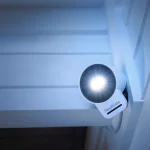The Android of today is worlds better than what we had even a few years ago, but is certainly not infallible. Android has been evolving at a breakneck pace since it hit the market in 2008, sometimes that has led to errors in judgement. Mistakes were made. There are plenty of examples where had to backpedal (or pull a feature entirely) after it failed to catch on, here are four of the most prominent.
ck Screen dgets
The Android lock screen was a very barebones affair for the first few years, then with version 4.2 lly Bean in late 2012, Mountain View finally added support for populating your lock screen with widgets. So that was it, right? Happily ever after! ll sure, except ’s implementation was a bit lacking.

They had potential, but it just wasn’t enough.
The lock screen only allowed you to place a single widget on each page, then swipe through them. You couldn’t even double-up small widgets, which really limited what you could place on those screens. Consider that didn’t even have any of its own custom widgets for the lock screen. Dash Clock was probably the best lock screen widget available, but it was a third-party option. A feature that isn’t useful until you download a third-party app is not going to do well.
At first, OEMs included lock screen widgets in their custom Android builds because, supposedly, users wanted them. That didn’t last long. Most of the flagship devices from 2014 dropped the core lock screen widget functionality in favor of their own customized lock screens.
Finally, in late 2014, released Android 5.0 llipop with no built-in lock screen widgets. Now we get notifications on the lock screen, which are probably more useful than widgets anyway.
Camera ve Effects
One of the features talked up at the Android 4.0 Ice Cream Swich announcement in 2011 was the camera, specifically the 5Mshooter on the new Galaxy Nexus flagship. It supported nearly instant image capture advanced features like panorama mode, but it also had something altogether more bizarre—live effects. It’s okay if you don’t remember these. You would not be alone in finding little to no use for distorting your face while shooting a video.

This is just silly.
If anything, this was a tech demo for . The morphing effects were a series of hardware-accelerated G transformations. You could make your face bulbous or your eyes tiny, but at some point the Android team realized it was a little silly to have a button for that in the official camera app.
pulled the live effects “silly faces” menu from the camera in Android 4.2, it almost went unnoticed. There have been a few ports of the old Android camera from AOSwith live effects intact, so you can continue squishing your face if you like. has moved on, though.
ere Are the dgets?
ior to Android 4.0, widgets were tucked away behind a long press on the home screen. Ice Cream Swich brought them forward into the main app drawer with a separate tab. So they were more accessible more visual, which is nice if you’re often messing around with widgets—some people probably wouldn’t have even known widgets were a thing if not for the more prominent placement.

dgets were booted out of the app drawer last year.
That all changed in Android 4.4 KitKat. th the launch of the Now uncher, widgets have again been demoted to a list you access by long-pressing on the home screen. ly, people don’t use many widgets, even when they do, they aren’t adding removing them all the time. The app drawer gets a lot of use because you need to launch apps, but widgets? Those don’t need to be at your fingertips, taking up space crowding your app drawer.
Android increasingly plays to the majority of users, less to the tech savvy crowd. So widgets are deemphasized now. There are certainly reasons to have widgets in the app drawer, but is leaving that to third-party launchers.
External Storage rmissions
Removable storage is an often cited strength of Android, although fewer fewer devices have microSD card slots. oponents of the microSD card were displeased to learn that a permission change in Android 4.4 KitKat made external storage much less useful. This didn’t go over well.

llipop supports SD card access again.
In KitKat, a non-system app can create a folder for itself on the SD card can only write to that one. Other apps have their own folders, but there’s no cross-pollination: That social media app can’t access the image saved by your image editing app, if it’s on your SD card. So file managers, image editors, similar apps were broken (unless you were willing to root). actually started including this usage model for external storage way back in Honeycomb, but OEMs ROM developers always opted to use the old method. y would they do any different? It wasn’t until KitKat that required the stricter SD card permissions.
This is technically a safer, cleaner way to hle external storage. It was a smart feature change, but it was a serious pain in the butt for users. Thankfully, it didn’t take long to see the light on this one. As of Android 5.0, developers have a whole set of new As that allow apps to request full read/write access to the root SD card directory. After you grant it, apps can work like they used to on lly Bean. It’s a happy ending.
had to admit defeat in the above instances, but there are still some questionable decisions in Android. There are even some problems with llipop, so I wouldn’t be surprised to see a few more entries on this list in the coming months.

















